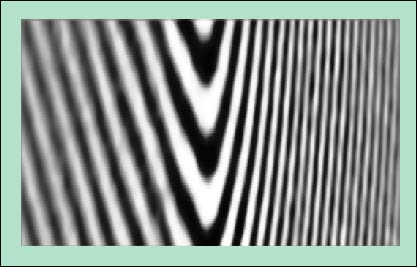- Superfluid meniscus in rotating 3He-B [PRL74, 2744 (1995)]
- Complex vicinal state on 4He crystal interfaces [PRL75, 3324 (1995)]
- Facet growth of 4He crystals at mK temperatures [PRL76, 4187 (1996)]

|
Interfacial phenomena
belong to a wide range of physical problems which have
been investigated actively during recent years. Some of
the most outstanding systems in this field of research
are the liquid-vapor and liquid-solid boundaries in pure
helium, as well as the phase-separation surface in
helium mixtures. The interface between the liquid and
solid phases of helium, for example, provides a unique
system to investigate melting and freezing phenomena in
a situation where thermal processes do not disturb the
kinetic behavior of basic surface excitations.
We have developed an interferometric scheme that allows optical investigations of interfaces in quantum fluids and solids down to submillikelvin temperatures. The method is based on a cooled CCD sensor, located inside the 4-K vacuum can. The accuracy in determining changes in the position of the interface is about 5 nm in the best cases. A multitude of new findings has been found on the 4He liquid-solid interface in our experiments. The major reason for this is that our optical method is two orders of magnitude more sensitive than the interferometric techniques employed by others in studies of the equilibrium crystal shapes in helium. |